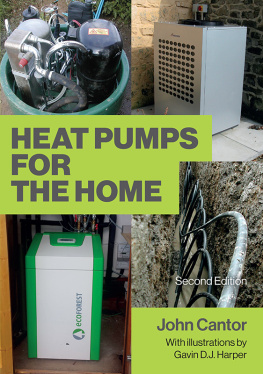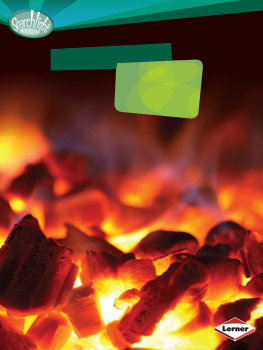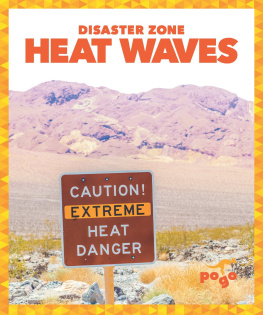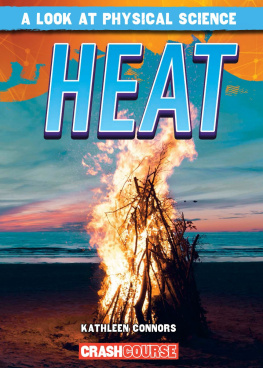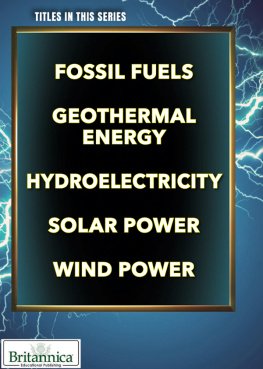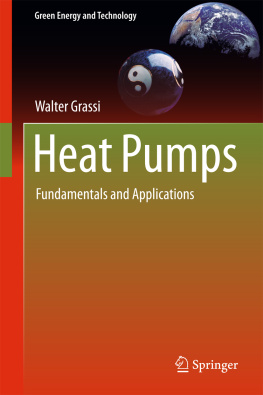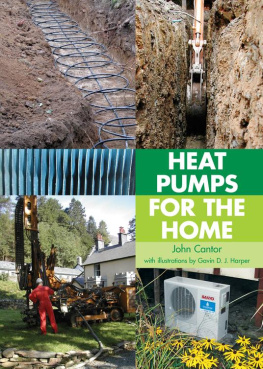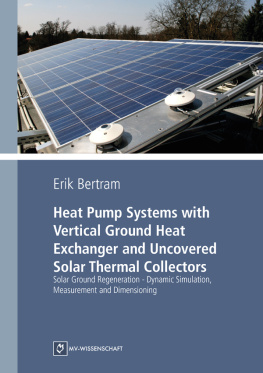Page List
HEAT PUMPS
FOR THE HOME
Second Edition
John Cantor
With illustrations by Gavin D.J. Harper

First published in 2011 by
The Crowood Press Ltd
Ramsbury, Marlborough
Wiltshire SN8 2HR
www.crowood.com
This e-book first published in 2020
Revised edition 2020
John Cantor (text) and Gavin D.J. Harper (illustrations) 2011 and 2020
All rights reserved. This e-book is copyright material and must not be copied, reproduced, transferred, distributed, leased, licensed or publicly performed or used in any way except as specifically permitted in writing by the publishers, as allowed under the terms and conditions under which it was purchased or as strictly permitted by applicable copyright law. Any unauthorised distribution or use of this text may be a direct infringement of the authors and publishers rights, and those responsible may be liable in law accordingly.
British Library Cataloguing-in-Publication Data
A catalogue record for this book is available from the British Library.
ISBN 978 1 7850 0780 4
Disclaimer
The authors and the publisher do not accept any responsibility, in any manner whatsoever, for any error, or omission, nor any loss, damage, injury, adverse outcome or liability of any kind incurred as a result of the use of any of the information contained within this book, or reliance upon it. Readers are advised to seek specific professional advice relating to their particular property, project and circumstances before undertaking any installation work concerning heat pumps.
Unless otherwise stated, all illustrations are by the authors.
INTRODUCTION
Heat pumps are surprising devices that can extract heat energy from something that appears to be cold from the air or the ground, for example and magically use it for home heating. This concept is somewhat perplexing and goes counter to our natural sense of how things ought to work, so it is not surprising that some people wonder if heat pumps really do what they claim. There is, after all, no shortage of gadgets that fail to do what they say on the box!
In this book we want to give you the whole picture, warts and all. Like any other technology, heat pumps can perform poorly if badly installed or used for the wrong purposes, and we cannot expect them always to match the exaggerated promises of salesmen. This book aims to demystify a subject clouded in hype and misunderstanding. But the basics are straight-forward. The science is completely sound. The engineering principles are well-established. And we know from hands-on experience that heat pumps will deliver low heating bills, if they are installed properly. Furthermore, the recent greening of mains electricity has brought heat pumps to the forefront. They are serious contenders in the quest to abate climate change.
The book is aimed at anyone who wants to improve their understanding of modern heat pumps, such as householders, planners, plumbers, students or architects. Armed with the content of this book, the informed homeowner or designer should be able to judge whether a heat-pump installation might be appropriate in a given situation and how its performance might be optimized. It is written with UK readers in mind, but the practical information will be equally useful to readers from elsewhere.
How To Read This Book
Although heat pumps have a wide range of applications in all sorts of circumstances, there is no getting around the fact that they are not a one-size-fits-all technology. Heat-pump installations tend to be very case-specific. That is, they are sensitive to what might seem at first small details regarding the site, usage factors, operation and so on.
Lets suggest an analogy. The difference between a domestic heat-pump system and a normal central-heating system is a bit like a sailing boat compared with a motorboat. A motorboat is brutally simple. You just rev up the engine and blast away. Theres no finesse and one size does (more or less) fit all. With a sailing boat its much more subtle and fine details of hull design, trim and setting the sails and rudder correctly make all the difference between slicing swiftly through the water and merely limping along. Heat-pump installations are rather like this and small details can make the difference between outstanding and mediocre performance. But we dont want to imply that you have to spend all your time adjusting a heat pumps rigging: once its set correctly, it should operate automatically throughout the seasons with no attention. Indeed, they promise to be a fit-and-forget technology.
To get a handle on these small-details-that-make-all-the-difference, involves at least some understanding of a fair sprinkling of different ideas, some of which might be new to you.
Most of these ideas can be grasped immediately, but others seem to go against our normal intuition and can take more than usual effort to enable you to become comfortable with them. Well try and help you as much as possible in these cases and usually it doesnt take long before you will be saying, Aha! Why didnt I get that all along?.
Once you have got a reasonable grasp of the basic ideas, you can put them together, a bit like a jigsaw-puzzle and then you will have a good idea of the potential for heat pumps and in what kinds of situations they would be suitable. It should then be possible for you to evaluate a real situation and decide what kind of heat-pump installation, if any, would be right for the job. Or, to look at it another way, you could look at a proposed installation and be able to say with some confidence if its likely to be a winner or if another technology would actually be a better proposition.
For these reasons it is difficult to lay out the book in a linear sequence, because to some extent all the bits depend on each other. The whole picture perhaps wont be apparent until you get towards the end. So to put the details in context, we shall start with a section illustrating how heat pumps are currently being used and what they can offer. Then we get down to the nitty-gritty, looking at the ideal heat pump, how the thing is supposed to work and compare it with the constraints of real life. Then we go through the details of a houses heating needs and how they can be matched to the right kind of installation. We will, when appropriate, remind readers that a heat pump is not always the right answer! We deal with economic issues and environmental aspects later in the book, and readers who dont want to grapple with the technicalities can jump straight there. Finally, for the heroic survivors we have added a more detailed account of what goes on inside your heat pump in the Appendices.
Acknowledgements
Over the last thirty years I have had countless in-depth conversations on the topic of heating and heat pumps. I would like to thank all those people, too numerous to mention, who have increased my knowledge, shaped my perception and made this book possible.
In particular, I would like to thank my mentor, Peter Harper, for his book-writing wisdom and help with the Introduction, and Gavin Harper (no relation to Peter), without whom this book would not have been written. For my wife Sabrina, whose frequent; What do you mean by this? was exceptionally helpful, and for Adelyns epic formatting and proof-reading stint, with technical support from Tomos.
For general information, I would like to thank Robin Curtis and Nic Wincott.

